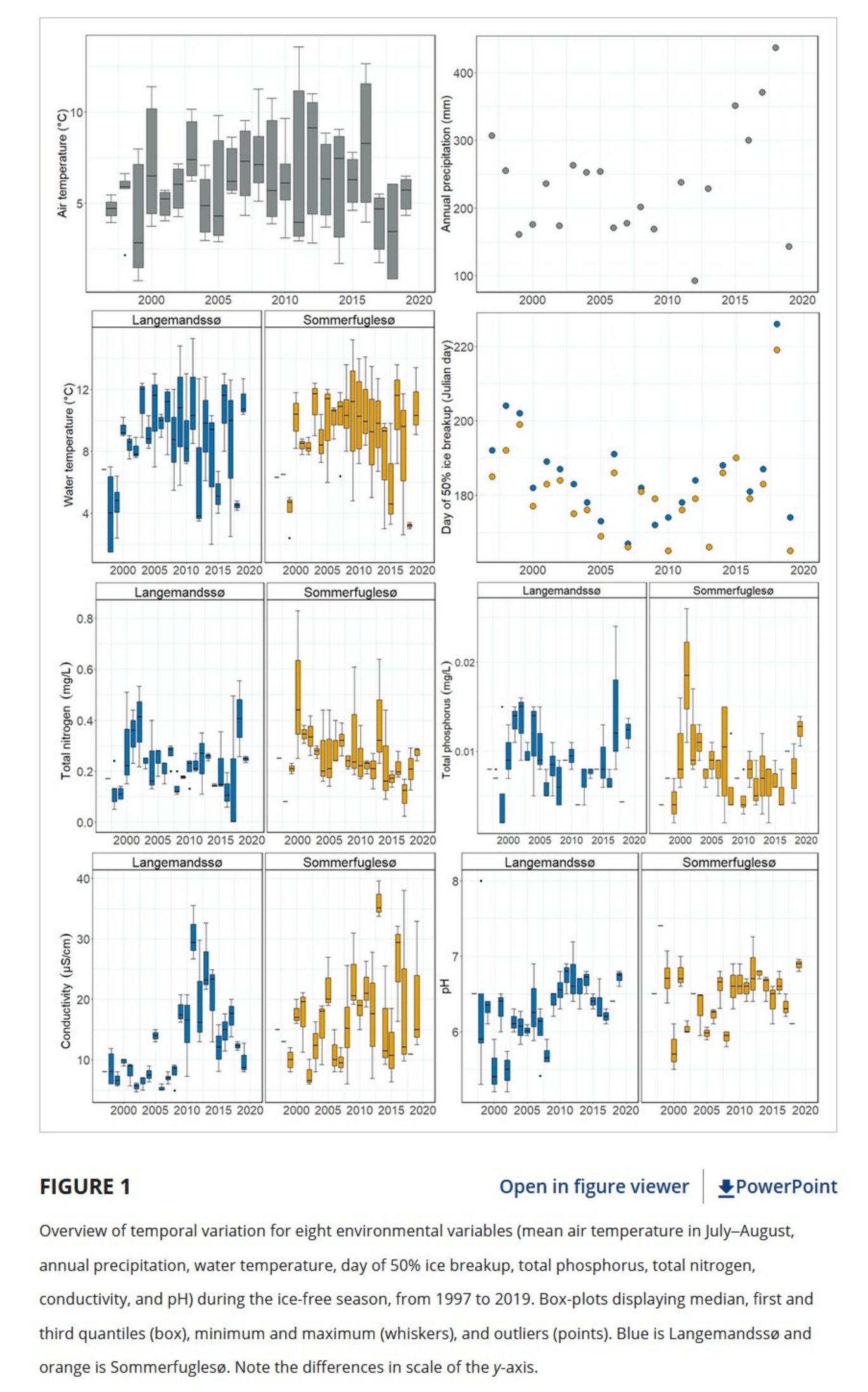Long-term phytoplankton dynamics in two High Arctic lakes (north-east Greenland)
New publication by Sanne M. Moedt, Kirsten Olrik, Niels M. Schmidt, Erik Jeppesen, Kirsten S. Christoffersen

Abstract:
Abstract Primary producers form the base of lake ecosystems and, due to their often short lifecycles, respond rapidly to changing conditions. As the Arctic is warming nearly four times faster than the global average, we see major shifts in environmental conditions, which impacts lake ecosystem functioning. Previous studies have found a general increase in primary productivity due to climate warming. However, few long-term studies have included changes in phytoplankton community composition and biomass in relation to warming in Arctic lakes and it therefore remains unclear how different algal taxa and thus the community respond. We investigated how climate warming affects phytoplankton community composition, taxon richness and biomass in High Arctic lakes, using a unique 23-year data series on phytoplankton in two shallow lakes at Zackenberg, north-east Greenland, one with Arctic charr (Salvelinus alpinus) and one without fish. We further elucidated the role of physico-chemical variables and zooplankton grazers in the changes observed. Few major changes were observed in phytoplankton community composition over time, but the year-to-year variation was large. Taxon richness did, however, increase throughout the monitoring period, and in both lakes there was a significant increase in diatom biomass coinciding with increasing conductivity. Additionally, phytoplankton biomass was greater during warmer years with earlier ice melt. We further found that nutrient levels were positively associated with the total phytoplankton biomass in both lakes, indicating that expected increased nutrient levels, due to climate change, may lead to a greater phytoplankton biomass in High Arctic lakes in the future. The large year-to-year variability, in both climate and environmental conditions, makes it difficult to predict weather patterns and their consequences for lake ecosystems in the Arctic region. This underlines the importance of long-term monitoring programmes across the circumpolar Arctic and collaboration across regions and institutes within large scale studies.
